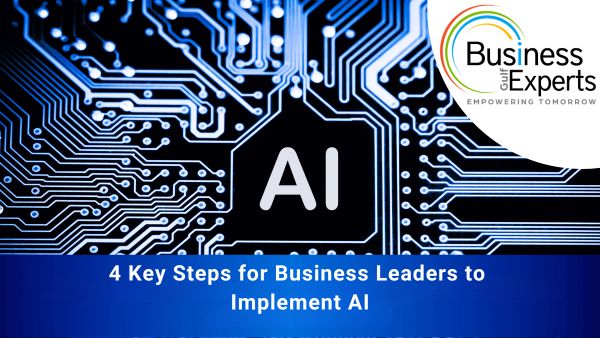4 Key Steps for Business Leaders to Implement AI
Artificial Intelligence (AI) is revolutionizing industries and reshaping business operations. For business leaders, implementing AI can seem daunting, but with the right approach, it can lead to significant competitive advantages. Here are four key steps to successfully integrate AI into your business strategy:
1. Identify Business Goals and Challenges
Before diving into AI, it’s crucial to understand what you aim to achieve. Identify the specific business goals and challenges that AI can address. Whether it’s improving customer service, optimizing operations, or enhancing decision-making, having clear objectives will guide your AI strategy.
Questions to consider:
- What are the pain points in your current processes?
- How can AI help in achieving your business objectives?
- What are the measurable outcomes you expect from AI implementation?
Detailed Steps:
- Conduct a SWOT Analysis: Evaluate your business’s strengths, weaknesses, opportunities, and threats to identify areas where AI can have the most impact.
- Engage Stakeholders: Involve key stakeholders from different departments to gather diverse perspectives on potential AI applications.
- Set SMART Goals: Define Specific, Measurable, Achievable, Relevant, and Time-bound goals for your AI initiatives.
2. Build a Skilled Team
AI implementation requires a combination of technical expertise and domain knowledge. Assemble a team that includes data scientists, AI specialists, and domain experts who understand your industry. This team will be responsible for developing, deploying, and maintaining AI solutions.
Key roles to include:
- Data Scientists: To analyze data and build AI models.
- AI Engineers: To develop and integrate AI systems.
- Domain Experts: To provide industry-specific insights and ensure AI solutions are relevant.
Detailed Steps:
- Hire and Train Talent: Invest in hiring skilled professionals and provide ongoing training to keep them updated with the latest AI advancements.
- Foster Collaboration: Encourage collaboration between technical and non-technical teams to ensure AI solutions align with business needs.
- Leverage External Expertise: Consider partnering with AI consultants or firms to supplement your in-house capabilities.
3. Invest in the Right Technology and Infrastructure
Choosing the right technology and infrastructure is critical for AI success. This includes selecting appropriate AI tools, platforms, and hardware that align with your business needs. Cloud-based solutions can offer scalability and flexibility, while on-premises infrastructure might be necessary for data-sensitive applications.
Considerations for technology investment:
- Scalability: Can the technology grow with your business?
- Security: Does it meet your data protection and privacy requirements?
- integration: How well does it integrate with your existing systems?
Detailed Steps:
- Evaluate AI Platforms: Research and compare different AI platforms to find the one that best fits your requirements.
- Ensure Data Quality: Invest in data management tools to ensure the quality and integrity of your data.
- Plan for Scalability: Choose technologies that can scale as your AI initiatives grow.
4. Foster a Culture of Innovation and Continuous Learning
AI is an evolving field, and staying ahead requires a culture of innovation and continuous learning. Encourage your team to experiment with new ideas, stay updated with the latest AI trends, and continuously improve AI solutions based on feedback and performance metrics.
Ways to foster innovation:
⦁ Provide training and development opportunities.
⦁ Encourage cross-functional collaboration.
⦁ Celebrate successes and learn from failures.
Detailed Steps:
- Create Innovation Labs: Establish dedicated spaces for experimentation and innovation.
- Promote Lifelong Learning: Offer resources and incentives for continuous learning and professional development.
- Implement Feedback Loops: Regularly collect and analyze feedback to refine and improve AI solutions.
Conclusion
Implementing AI is a journey that requires careful planning, the right team, and a commitment to continuous improvement. By following these four key steps, business leaders can harness the power of AI to drive growth, efficiency, and innovation in their organizations.






